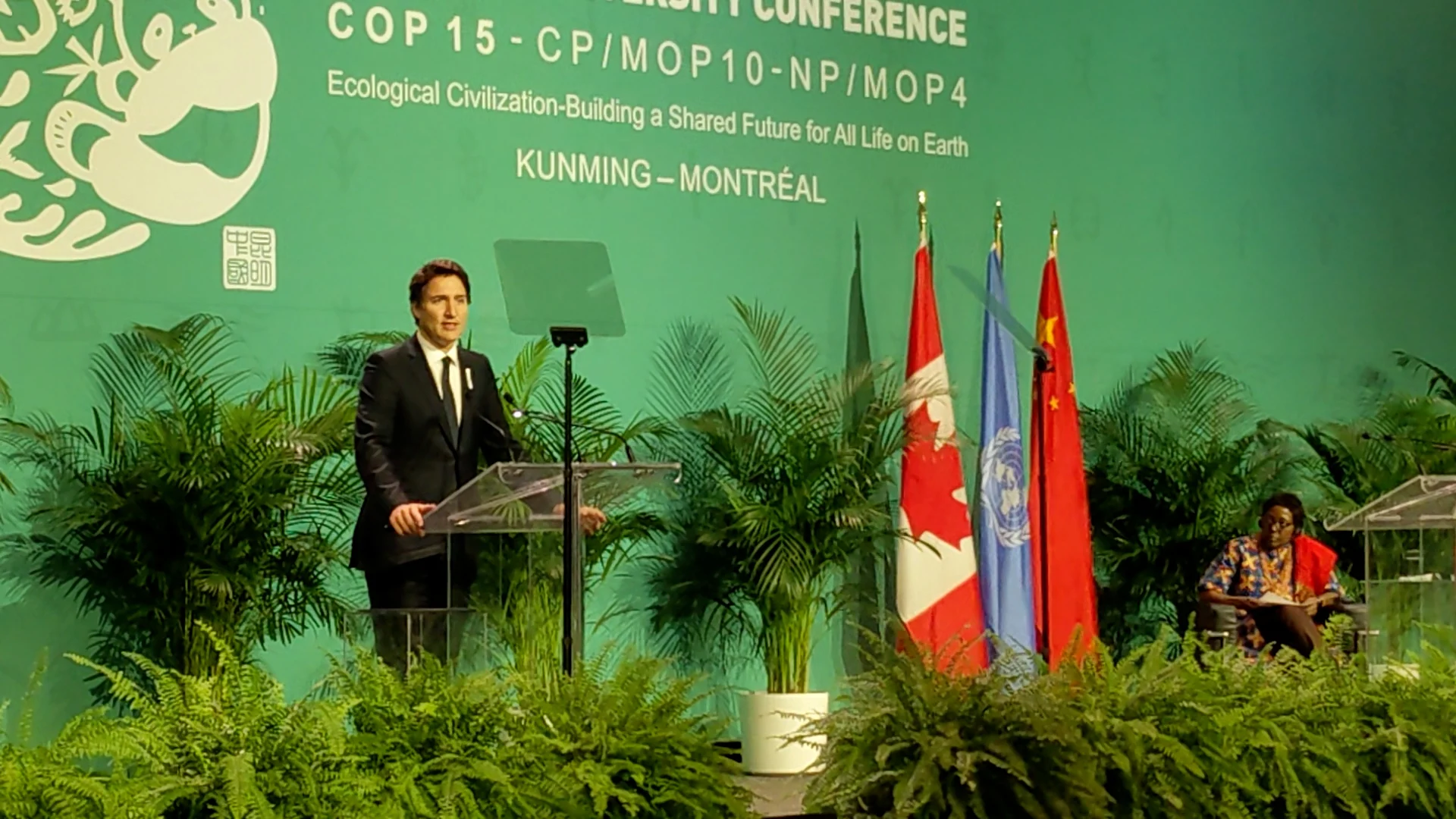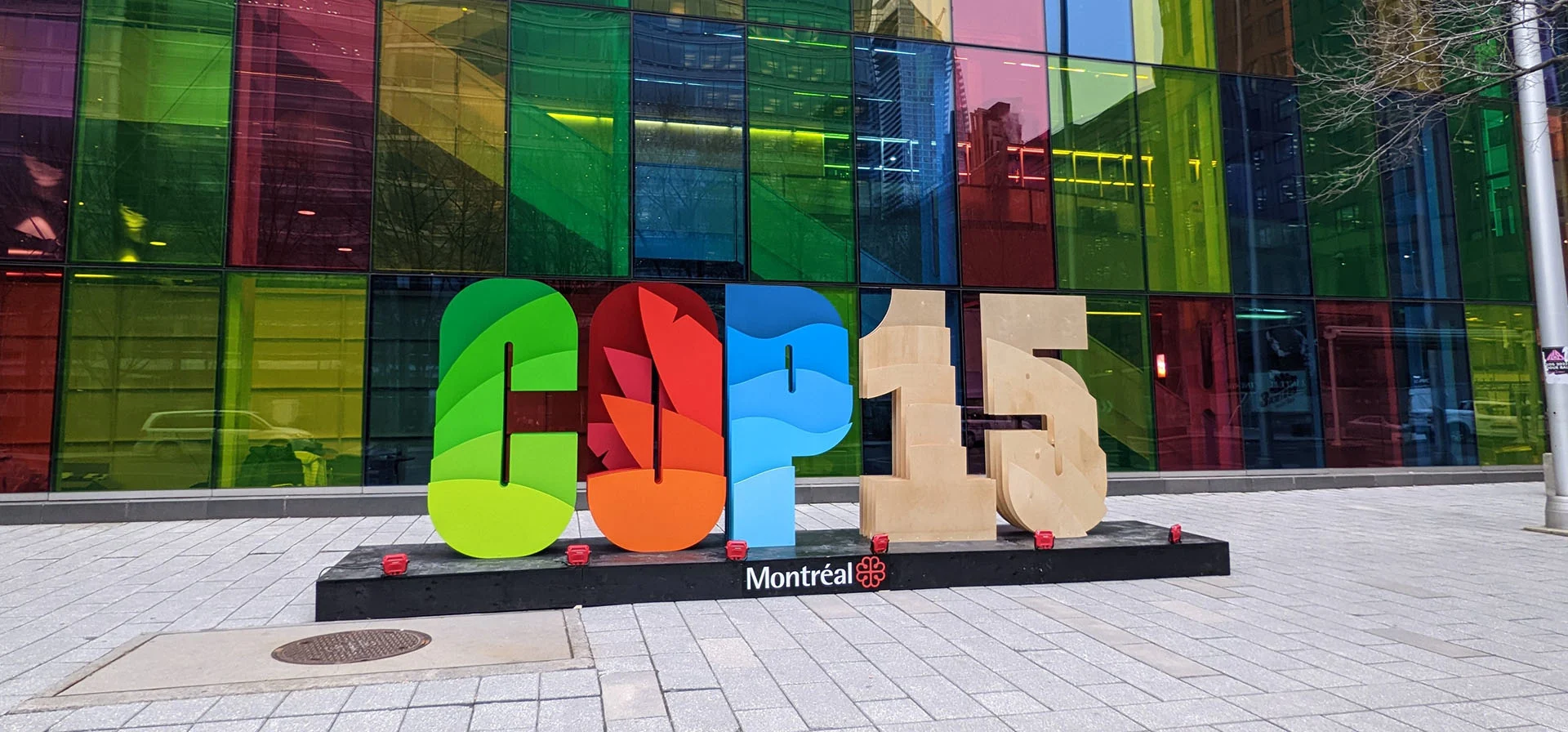
Global deal reached to reverse nature loss, protect land and oceans
Dubbed a 'Paris Agreement' for nature, the Kunming-Montreal Global Biodiversity Framework was finally adopted on the final day of COP15 in Montreal.
Hopes were high for the COP15 on biodiversity. Just a few days after the end of COP27 on climate, negotiators landed in Montreal to hammer out an agreement to stop the loss of biodiversity on a global scale.
Finally, on Monday, Dec. 19, the parties have adopted the Kunming-Montreal Global Biodiversity Framework with its “30 by 30” objective: to protect 30 per cent of land and sea and to restore 30 per cent of degraded ecosystems by 2030. Other objectives include reduction of risks related to pesticide use and reduction of harmful subsidies.
“This Kunming-Montreal deal is a transformational opportunity for biodiversity justice, a moment to secure a safe future away from current colonial, destructive and suicidal pathways,” declared Eddy Pérez, International Climate Diplomacy Director at Climate Action Network – Réseau action climat Canada (CAN-Rac) in a press release.
“We welcome Canada’s critical role in ensuring the adoption of the Global Biodiversity Framework. This must be a bottom line for ambition and an early demonstration of Canada’s efforts to address the underlying causes of the biodiversity and climate crises. With the mass extinctions we’re witnessing, the rapid disappearance of places and species we love and upon which we depend, the Montreal – Kunming deal must propel us forward into a new era of urgent action and solidarity.”
It’s important to remember that climate and biodiversity are intrinsically linked. Healthy diverse ecosystems are key to regulate the climate and reverse the damage — more trees to capture CO2, more insects to pollinate crops, more animals to bring balance to the environment.
Indigenous representation
Indigenous peoples and local communities were well represented at the COP15, at least in the speeches and side events inside and outside the security perimeter. Prime Minister Justin Trudeau’s opening speech was interrupted by First Nations youth protestors, who delivered an official statement in the press room a few days later:
The inclusion of Indigenous and local knowledge in conservation efforts is crucial, as they are the most vulnerable to the impacts of climate change and the loss of biodiversity, but also the most directly dependent economically on the sustainable exploitation of natural resources. They are also the best stewarts of the land where they have lived and maintained close ties to the environment for generations. Despite making up only 15 per cent of the population, Indigenous peoples live on lands that contain 80 per cent of the world’s remaining biodiversity. This contribution is recognized in the final framework, which reaffirms the rights of Indigenous peoples and local communities in the implementation.
Watch below: How Canada performed on the global stage at COP27
Money matters
As with the COP27, finance was a key point of contention. Developing nations even walked away from negotiations a few days before the end of the talks in the face of intractable opposition from richer countries on the question of who should pay to reverse biodiversity loss.
The final framework will require $200 billion a year for implementation, including $20 to $30 billion from richer countries to help developing countries with their obligations under the agreement.
Early criticism
While the deal itself is being celebrated by many. Some key organizations remind us that the devil is still in the details. “WWF celebrates the inclusion of an overarching global goal of halting and reversing biodiversity loss by 2030,” said Marco Lambertini, Director General of WWF International in an email statement about the draft text of the agreement. “However, there still remain several loopholes, weak language, and timelines around actions that aren’t commensurate with the scale of the nature crisis we’re all witnessing, and importantly may not add up to achieve this shared global goal.”
WWF’s statement cited issues with being able to measure the commitments without having a baseline for comparison and called for more specific targets around production and consumption.

Canada’s additional commitments
Governments often take advantage of the spotlight during COP meetings to make big announcements that push negotiations forward. As the host country, Canada had to be a role model, not only by adopting ambitious targets, but also by bringing the funds to achieve them. Here is the round-up of announcements from Canada during the COP15:
$350 million supplemental funds to help developing countries reach their objectives, beyond the $1 billion already pledged for climate action.
$800 million over seven years to support four Indigenous-led conservation initiatives.
$255 million over five years to support four projects in developing countries.
$90 million over three years to extend the Natural Heritage Conservation Program and secure an additional 180,000 hectares of ecologically-sensitive land.
$20.6 million to implement the Canada–Yukon Nature Agreement.
New guidelines to stop public subsidies to international fossil fuel companies.
19 million hectares to be restored to meet the Bonn Challenge.
While the Kunming-Montreal Global Biodiversity Framework was adopted by unanimous agreement from all countries present (a list which excludes the United States and the Vatican, and with some objections from African countries over funding), it is important to remember the document is not legally binding. It is a guiding star that countries have agreed to follow as they develop and implement their own strategies to protect biodiversity around the world.
Thumbnail image: Prime Minister Justin Trudeau speaking at the opening of the COP15 conference in Montreal.












